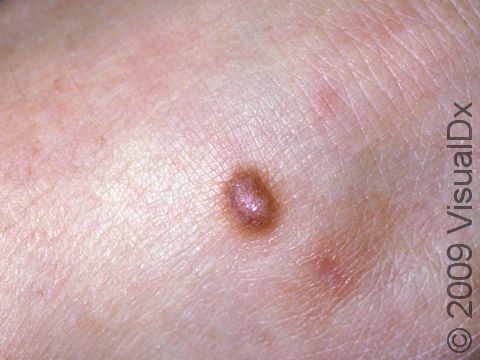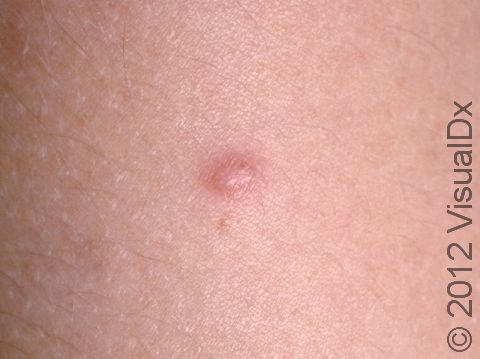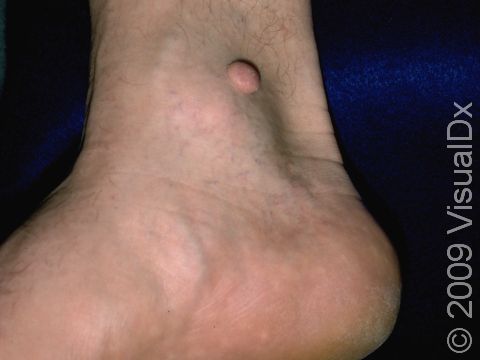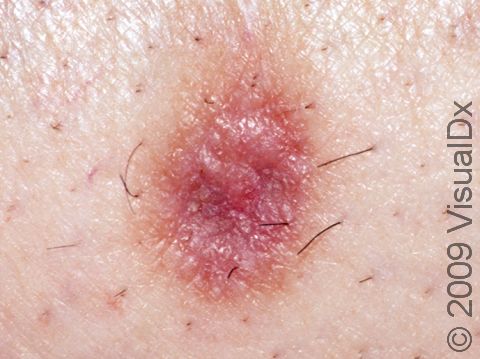Dermatofibroma
Dermatofibromas, or fibrous histiocytomas, are common skin growths. They are papules (small, smooth, solid bumps) or nodules (larger smooth, solid bumps) that are firm or hard to the touch. They can be reddish, pink, brown, or skin-colored, and they may have a white scar-like center. Dermatofibromas are usually not painful or itchy, but occasionally they may be tender to the touch. They usually persist for life, but they may become flatter and softer after several years. When large numbers of dermatofibromas are present, there may be an underlying condition present, such as lupus or a weakened immune system, such as from leukemia or HIV.
Who's At Risk?
Dermatofibromas may occur at any age but are seen more commonly in adults, particularly women.
Signs & Symptoms
Dermatofibromas are most often found on the arms and legs of women. They are papules or nodules that may be tan, pink, red, or brown in lighter skin colors or any shade of brown in darker skin colors. They may have a whitish center. They feel quite firm or even hard, and sometimes they may be tender when touched. Many dermatofibromas demonstrate a “dimple sign,” where the central portion puckers as the lesion is compressed on the sides. They generally do not change in size over the years, but older dermatofibromas may be flat or soft.
Self-Care Guidelines
No self-care is necessary.
Treatments
Your medical professional may simply reassure you that what you have is a dermatofibroma and that no treatment is necessary. If your dermatofibroma is painful or cosmetically bothersome, they may try:
- Liquid nitrogen (freezing) therapy to reduce the lesion’s size. In darker skin colors, freezing with liquid nitrogen may cause skin color changes that may last for a long time.
- Surgical excision can be performed, but this will leave a linear scar that may be longer than the size of the original dermatofibroma.
Visit Urgency
Seek medical evaluation for any new firm growth of any color on your skin.
References
Bolognia J, Schaffer JV, Cerroni L. Dermatology. 4th ed. Philadelphia, PA: Elsevier; 2018.
James WD, Elston D, Treat JR, Rosenbach MA. Andrew’s Diseases of the Skin. 13th ed. Philadelphia, PA: Elsevier; 2019.
Kang S, Amagai M, Bruckner AL, et al. Fitzpatrick’s Dermatology. 9th ed. New York, NY: McGraw-Hill Education; 2019.
Paller A, Mancini A. Paller and Mancini: Hurwitz Clinical Pediatric Dermatology. 6th ed. St. Louis, MO: Elsevier; 2022.
Last modified on February 28th, 2023 at 5:06 pm

Not sure what to look for?
Try our new Rash and Skin Condition Finder



